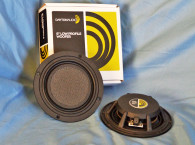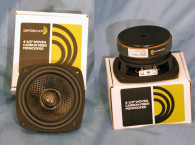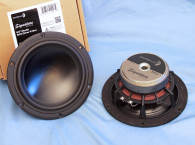But before I begin this driver explications, I am pleased to announce that I have received and implemented Loudsoft's new FINE R+D Analyzer with the FINE Hardware 3 192-kHz sampling rate platform (see Photo 1). Basic features of the new analyzer include three microphone input channels with selectable 48 V Phantom power, a balanced 25 W internal amplifier, XLR balanced line out (allows using a higher powered outboard amplifier), plus a built-in power supply with a front panel on/off switch (and no wall wart!). I am frequently asked by LinearX LMS owners who know that due to the analyzer’s age as well as the age of most ISA bus computers (the ISA bus standard ended in 1999), whether a replacement is on the horizon. While there are a number of great analyzers available, I certainly have no trouble recommending the new FINE R+D analyzer (now shipping). Note that the photo shows the DPA microphone that comes with the analyzer, however, as with the previous Loudsoft analyzer, I am using the G.R.A.S. Sound & Vibration Type 46 BE microphone.
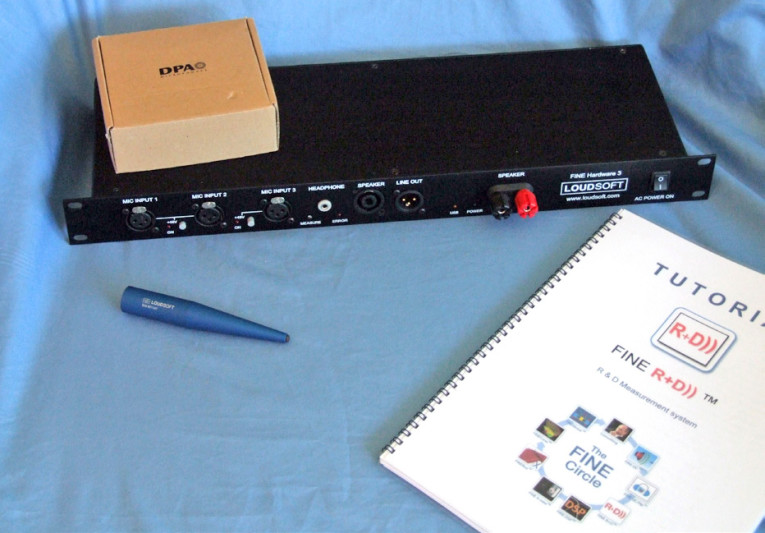
The submission to this month’s Test Bench column came from Dayton Audio, from the company’s new Epique high-end transducer line. This new 5.25” midwoofer from Dayton’s Epique series, the E160CF-8, is Dayton’s entry into the ultra-high-end driver market (see Photo 2). Dayton built it with the intention of competing with the likes of SEAS, Scan-Speak, Eton, Accuton, and Morel. Applications for the E160CF-8 include use as a midrange in a multi-way speaker or as a woofer in a two-way speaker.
Features include a lightweight inverse curved profile damped (coated) carbon fiber cone sans dust cap, a proprietary cast aluminum frame that uses four three-member spokes to minimize reflections back into the cone, plus a fairly robust (for a 5.25” driver) 100 W RMS power handling capacity. Cooling is provided by a 0.66” (17 mm) diameter tapered and flared pole type vent, nine 3 mm diameter peripheral vents surrounding the pole vent, plus 16 15 mm × 6 mm vents located below the spider mounting shelf.
Compliance is controlled by a 7 mm wide NBR-type surround and a by a 3.5” diameter flat cloth spider. All this — the pole vent, the peripheral vents, and the spider vents — are trademarked as EVS for Extensive Venting System.
The motor assembly is powered by a FEA-optimized underhung motor design utilizing a 100 mm diameter 8 mm thick neodymium ring magnet with a 15 mm thick steel plate front plate and a shaped back plate, and includes a shorting ring (Faraday shield). Driving the cone assembly is a voice coil that consists of a 38 mm (1.5”) diameter titanium former wound with round copper wire. Voice coil tinsel lead wires terminate to a pair of solderable gold-plated terminals.

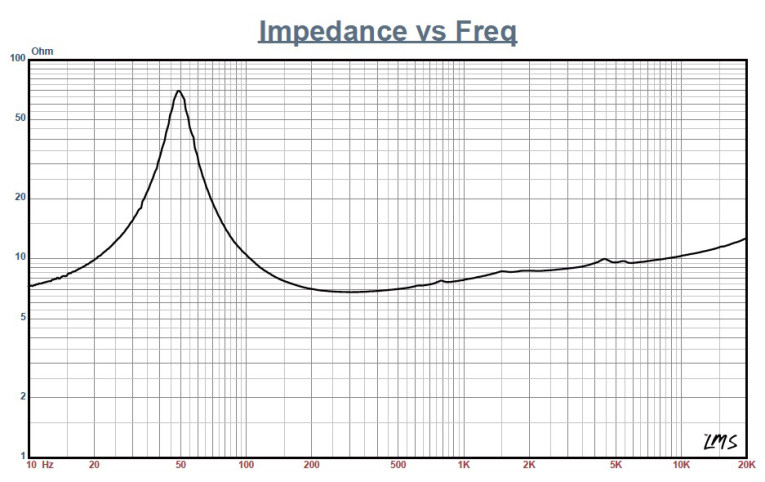
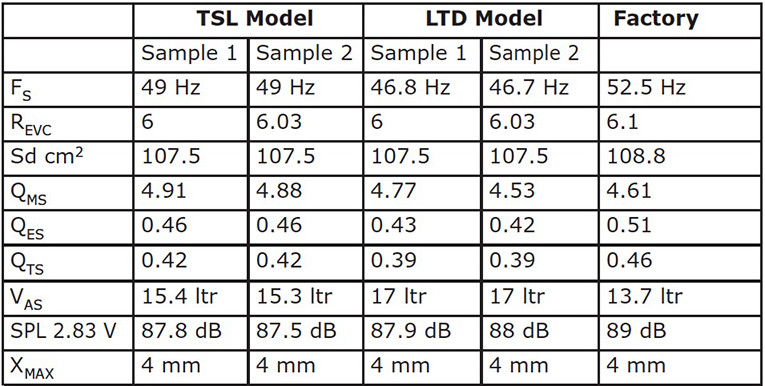
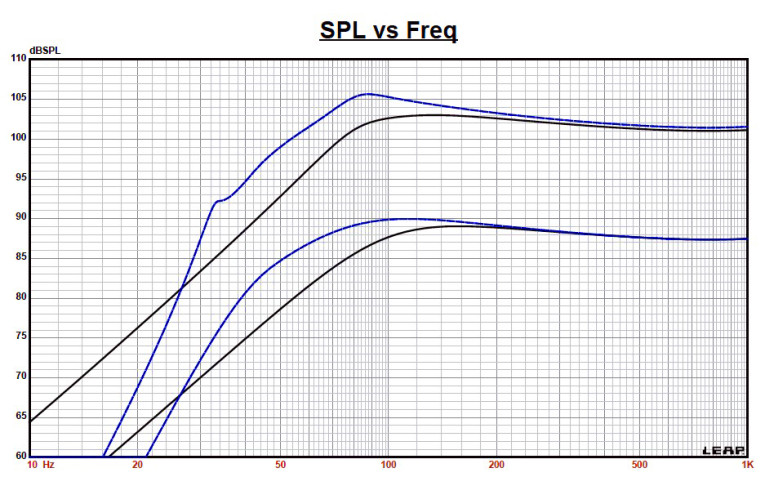
Testing began with the driver clamped to a rigid test fixture in free-air. Using a LinearX LMS analyzer and VIBox, I produced both voltage and admittance (current) curves at 0.3 V, 1 V, 3 V, 6 V, 10 V, and 15 V. The 15 V curves were close to making a useful curve fit, however, I discarded them and post-processed the remaining 10 10-Hz-to-20-kHz 550-point stepped sine wave curve pairs for each sample. Then I created the five impedance curves by dividing the voltage curves by the current curves. I applied the LMS phase calculation procedure to the impedance curves and imported them, along with the voltage curve for each sweep, into the LEAP 5 Enclosure Shop CAD program.
Since most Thiele-Small (T-S) data provided by OEM manufacturers is produced employing either a standard T-S model or the LinearX LEAP 4 TSL model, I additionally created a LEAP 4 TSL model using the 1 V free-air curves. Please note that even though LinearX is no longer in business after the unfortunate passing of chief engineer and founder Chris Strahm, LEAP 5 is still one of the best driver parameter generators ever devised in the loudspeaker engineering paradigm, and I will continue to use it until I find something that is as accurate at predicting high voltage excursion.
Next, I selected the complete curve set, the multiple voltage impedance curves for the LTD model, and the 1 V impedance curves for the TSL model in the transducer derivation menu in LEAP 5 and created the parameters for the computer box simulations. Figure 1 shows the 1 V free-air impedance curve. Table 1 compares the LEAP 5 LTD, the TSL data, and the factory parameters for both Dayton Audio E160CF-8 samples.
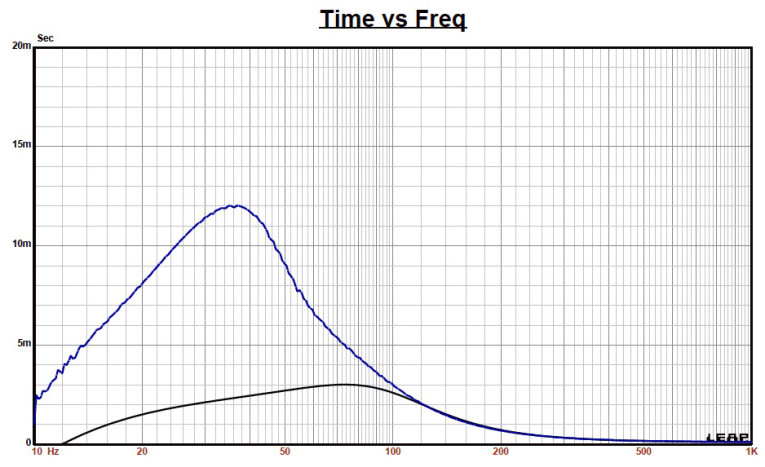

The T-S parameter results for the Dayton Epique 5.25” midrange/woofer were reasonably close to the factory data, with some variance in the Vas and SPL. Part of the variation is due to the difference in Sd calculation, a fairly sensitive parameter. The criteria used for Test Bench is to calculate Sd from the diameter of the cone plus half of the surround width on each side of the cone assembly. That said, I followed my standard protocol and proceeded to program computer enclosure simulations using the LEAP LTD parameters for Sample 1.
I used the LEAP 5 Enclosure program to generate enclosure volumes, which resulted in a 0.23 ft3 Butterworth sealed box with 50% fiberglass fill material, and a QB3 type vented alignment using 0.38 ft3 tuned to 48 Hz and with 15% fiberglass fill material. These two enclosures were somewhat different than the examples listed on the Parts Express website (using Bass Box 6), which were a 0.18 ft3 sealed box with an F3 = 97 Hz, and 0.58 ft3 vented box with an F3 = 51 Hz.
Figure 2 depicts the results for the E160CF-8 in the sealed and vented boxes at 2.83 V and at a voltage level sufficiently high enough to increase cone excursion to Xmax + 15% (4.6 mm for the E160CF-8). This calculation resulted in a F3 frequency of 83 Hz (F6 = 66 Hz) with a Qtc = 0.72 for the 0.18 ft3 sealed enclosure and –3 dB = 60.5 Hz (F6 = 47 Hz) for the 0.38 ft3 vented box simulation. Increasing the voltage input to both simulations until the maximum linear cone excursion was reached resulted in 103 dB at 15.5 V for the smaller sealed enclosure and 105.5 dB at 16.5 V input level for the larger vented box. Figure 3 shows the 2.83 V group delay curves. Figure 4 shows the 15.5/16.5 V excursion curves. Klippel analysis for the E160CF-8 produced the Bl(X), Kms(X) and Bl and Kms symmetry range plots shown in Figures 5-8. As usual, this data was provided by Patrick Turnmire, of Redrock Acoustics, with the DA2 Klippel analyzer courtesy of Klippel GmbH.
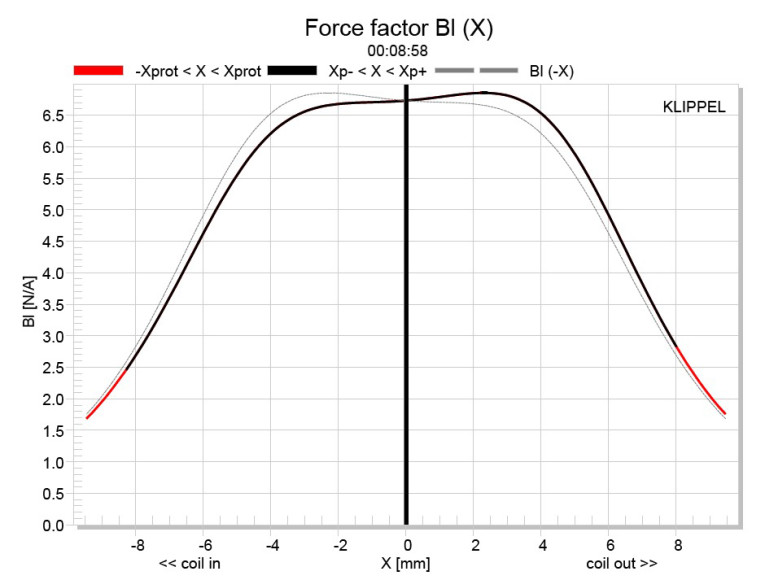

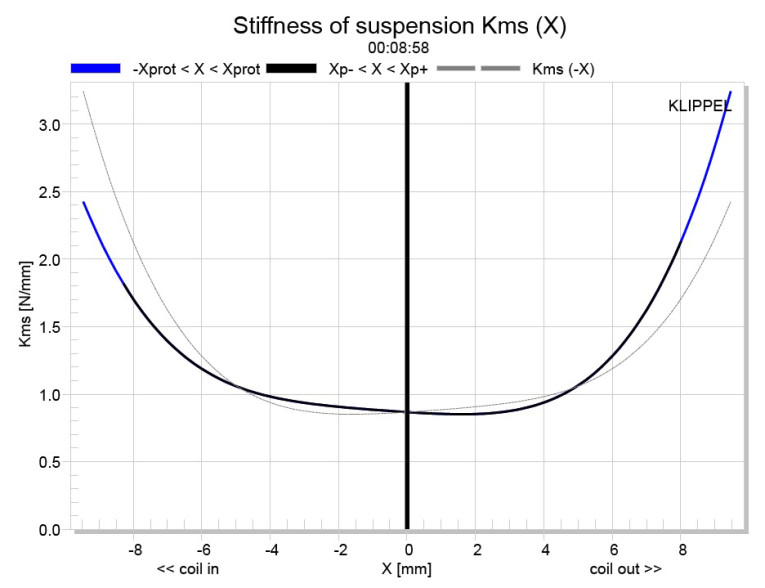
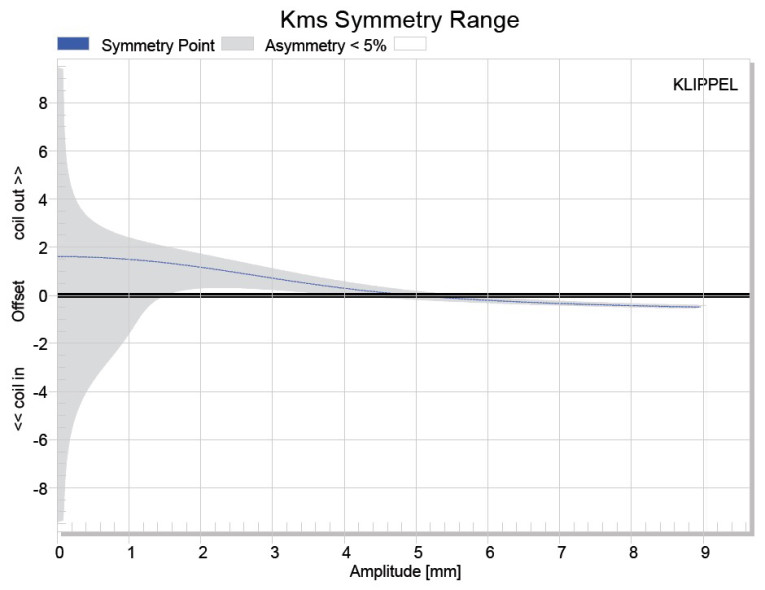
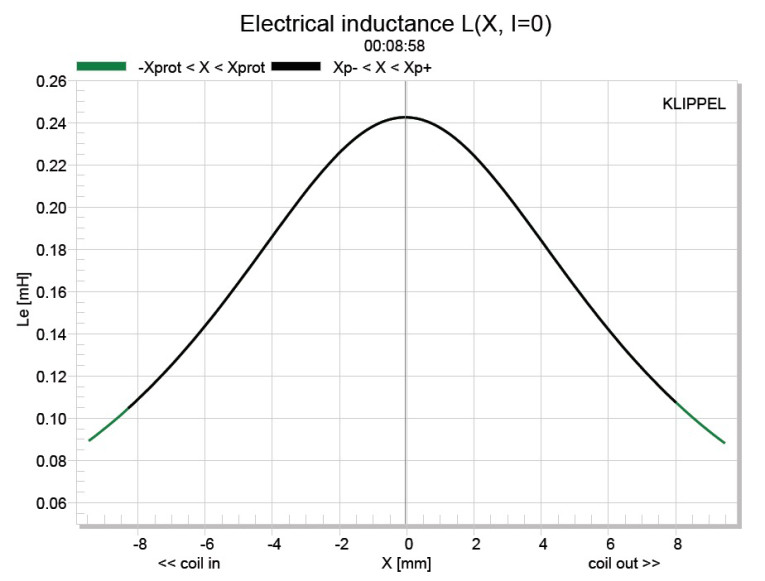
The Bl(X) curve (see Figure 5) is flat and moderately narrow with a small amount of tilt, but as you would expect for a short to moderate Xmax (4.0 mm) 5.25” driver. However, the curve is reasonably symmetrical with a very small amount of coil-out offset. Looking at the Bl symmetry plot (see Figure 6), this curve is offset a trivial 0.68 mm coil-out at the position of reasonable certainly (3 mm) and decreasing to 0.34 mm at the driver’s physical 4.0 mm Xmax.
Figure 7 and Figure 8 give the Kms(X) and the Kms symmetry range curves. The Kms(X) curve is rather symmetrical, again with a small amount of tile, with an extremely small amount of coil-out offset. Looking at the Kms symmetry range curve shown in Figure 8, there is 0.28 mm coil-out offset at the E160CF-8’s physical Xmax, so nearly perfect. Displacement limiting numbers calculated by the Klippel analyzer for the E160CF-8 were XBl at 82% Bl = 5.0 mm and for XC at 75%, Cms minimum was 5.5 mm, which means that for the E160CF-8, the Bl was the most limiting factor at the prescribed distortion level of 10%. However, both numbers exceed the Xmax and Xmax = 15% numbers. Using the less conservative criteria of XBl @ 70% and XC at 50%, the numbers are XBL = 5.9 mm and XC = 7.2 mm.
Figure 9 gives the inductance curves L(X) for the E160CF-8. Inductance will typically increase in the rear direction from the zero rest position as the voice coil covers more pole area, which is what you see in the inductance graph. From Xmax out to Xmax in, the inductance range is only 0.34 mH to 0.72 mH, which is only a 0.38 mH delta.
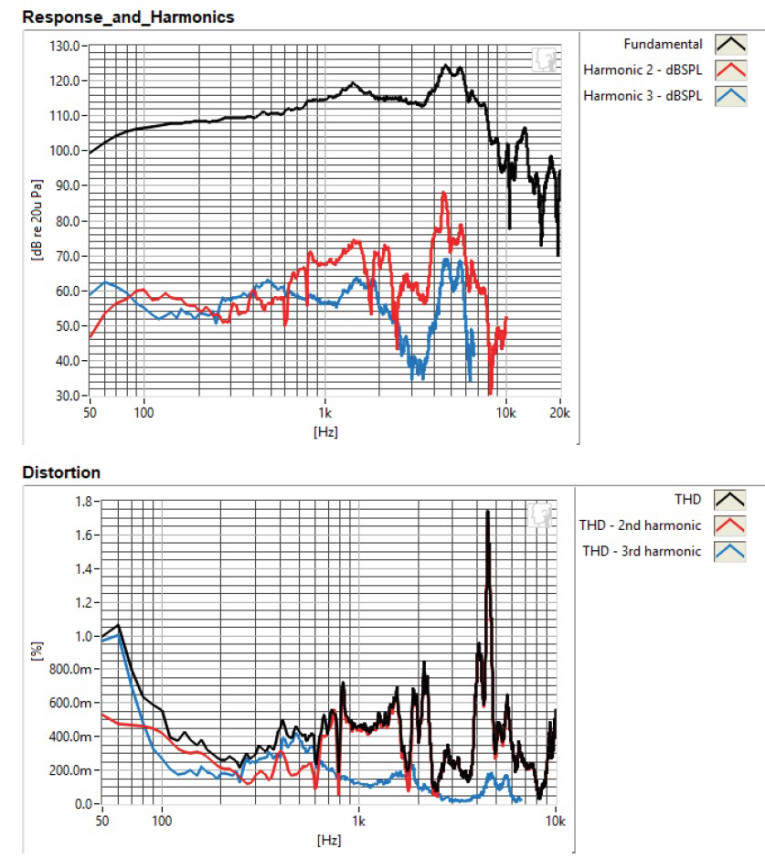
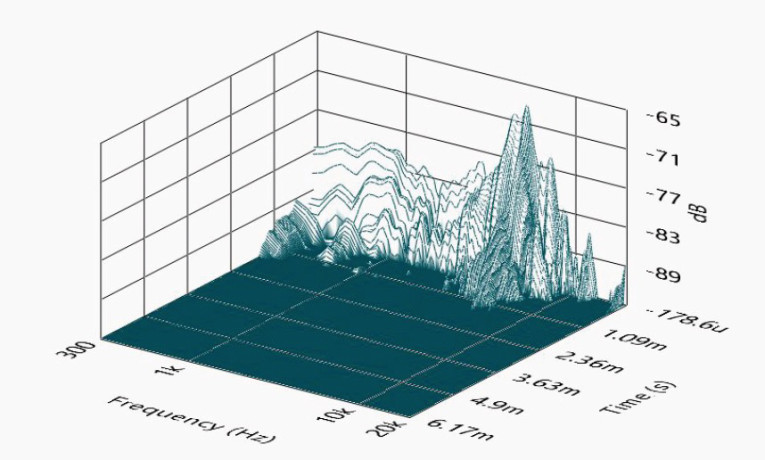

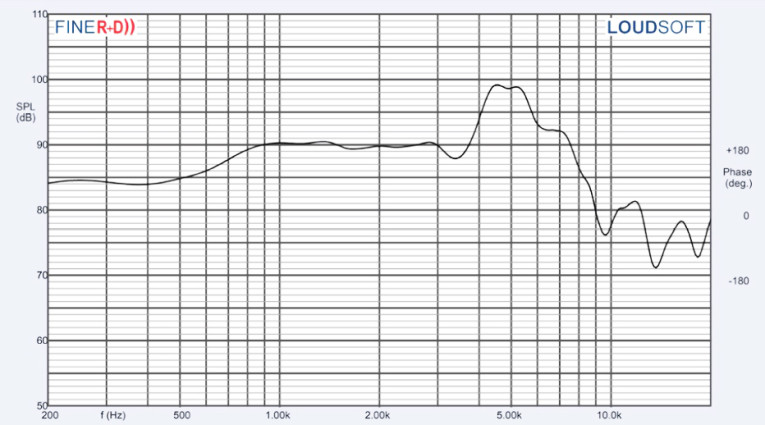
Next, I fired up the Listen, Inc. SoundCheck analyzer using SoundCheck 16 software and the AudioConnect interface along with the 1/4” SCM measurement microphone and set it up for distortion measurements. I set the SPL to 94 dB (4.55 V) at 1 m, my standard for pro sound devices. The E160CF-8 produced the distortion curves shown in Figure 10. Following the distortion measurements, I mounted the E160CF-8 in an enclosure with a 12”× 8” baffle to take the impulse measurement. I imported the data into Listen’s SoundMap software, windowed to remove the room reflections, and produced the cumulative spectral decay (CSD) waterfall plot shown in Figure 11 and the Wigner-Ville plot shown in Figure 12. For the remaining series of SPL measurements, I measured the driver frequency response using the LOUDSOFT FINE R+D analyzer and the G.R.A.S. 46 BE microphone (courtesy of LOUDSOFT and G.R.A.S) both on- and off-axis from 300 Hz to 20 kHz with a 1/6 octave smoothing (to simulate the 100-point LMS resolution used for years in this column) at 2.83 V/1 m using the cosine windowed Fast Fourier Transform (FFT) method. Figure 13 depicts the on-axis response, yielding a relatively smooth rising ±2 dB response from 600 Hz to 3.8 kHz followed by a breakup mode peak centered on 5 kHz.
Figure 14 illustrates the on- and off-axis frequency response at 0°, 15°, 30° and 45°. The -3 dB at 30° with respect to the on-axis curve occurs at 2.5 kHz, which suggest a likely crossover point of 2.5 kHz to 3 kHz would be appropriate for the E160CF-8. Figure 15 gives the normalized version of Figure 14. Figure 16 shows the CLIO Pocket (courtesy of Audiomatica SRL) generated horizontal plane polar plot (in 10° increments with 1/3 octave smoothing applied). And last, Figure 17 gives the two-sample SPL comparisons, showing both samples very closely matched throughout the operating range of the driver, with a 1 dB variation above 3 kHz.
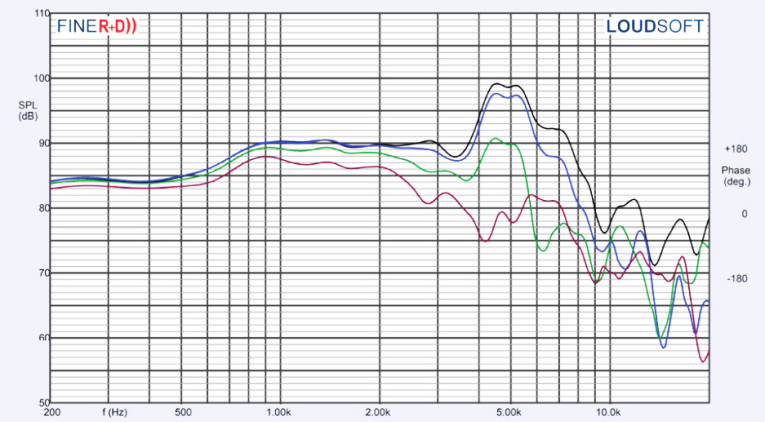



As is obvious, it appears that Dayton Audio has achieved its goal in producing a competitive high-end transducer with the new Epique E160CF-8. For more information on these and other Dayton Audio drivers, visit www.daytonaudio.com. VC
This article was originally published in Voice Coil, September 2018.





